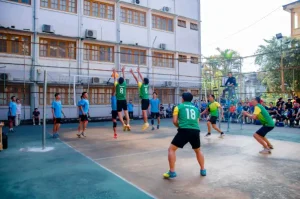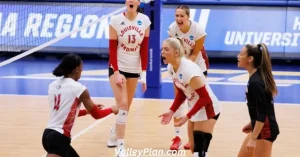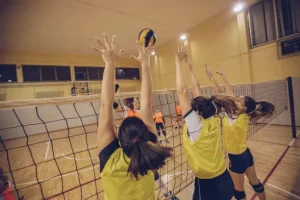Volleyball allows head-on play as a last resort. It’s legal and can provide advantages like quick reactions, but players must follow rules and safety considerations.
Dynamic volleyball requires precision and versatility. Many gamers wonder if they can use their heads while playing. This detailed guide will discuss the legality of volleyball’s head use, tactics, and benefits.
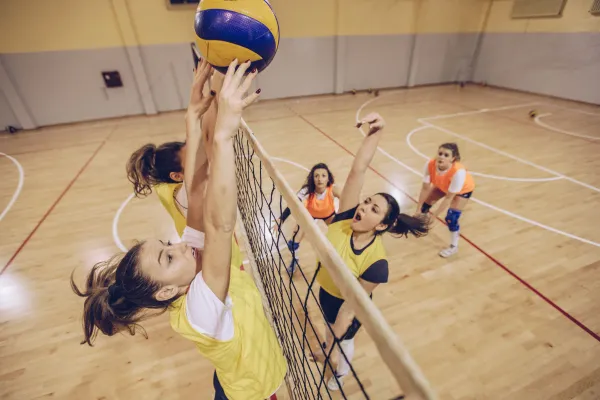
Understanding the Rules
Volleyball rules strictly limit body parts touching the ball, including the head. Official regulations enable players to use their heads to play the ball under specified conditions.
Techniques for Using Your Head
Using your head in game requires specific techniques for successful plays. Here are some fundamental techniques:
- Proper Positioning and Timing: To execute a successful header, ensure you are directly under the ball. Positioning and timing are crucial for an effective play.
- Defensive Saves and Strategic Plays: Skilled players use their heads for defensive saves and strategic plays on the court. This involves the head to control the ball’s direction.
- Practice Kicking and Heading: Kicking and heading may be formidable volleyball tools with practice and precision. Players can use their heads to redirect the ball accurately.
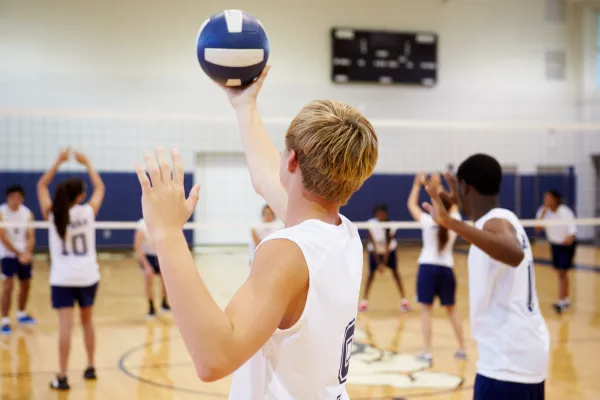
Advantages and Considerations of Using Your Head in Volleyball
Using your head can offer advantages and considerations:
| Sr No | Advantages & Consideration | Description |
|---|---|---|
| 1 | Element of Surprise | Headers in volleyball are relatively uncommon, providing an unexpected and surprising play on the court. This can catch opponents off guard and create scoring opportunities. |
| 2 | Legal Last Resort | While using your head is not a common technique, it is entirely legal in volleyball. It is considered a last resort, especially if a player or teammate accidentally gets hits in the head during play. |
| 3 | Quick Reactions | Using your head allows immediate reactions, especially in unexpected situations. It can help keep the ball in play and control. |
| 4 | Safety Considerations | Volleyball players utilizing their heads must follow rules and safety precautions. Avoiding injuries requires proper technique and attentiveness. |
| 5 | Head Positioning | A perfect head position is essential for accurate volleyball play. It promotes balance, increases visibility, and contributes to overall court awareness. |
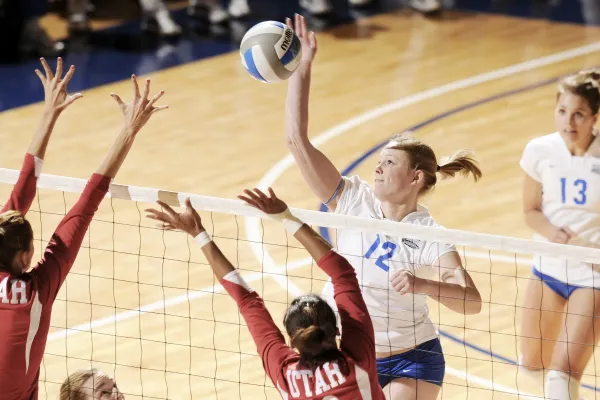
Can You Play The Ball With Your Head In Volleyball?
Players can head the ball. FIVB players can hit the ball with their head or body parts.
In volleyball, players engage in a technique known as a “header.” Whether intentional or accidental, players consider using their head to contact the ball a legitimate play within the sport.
What If the Volleyball Hit Head Accidentally?
Accidentally hitting your head in game is normal. Volleyball is rapid; therefore, the ball can hit the skull. In such cases, play usually continues without penalties or interruptions.
Players do not receive a penalty for an accidental head impact since it does not constitute a rule infringement. We must emphasize safety and make efforts to reduce injury risks. Players might use headbands or helmets to lessen the ball’s impact on the head.
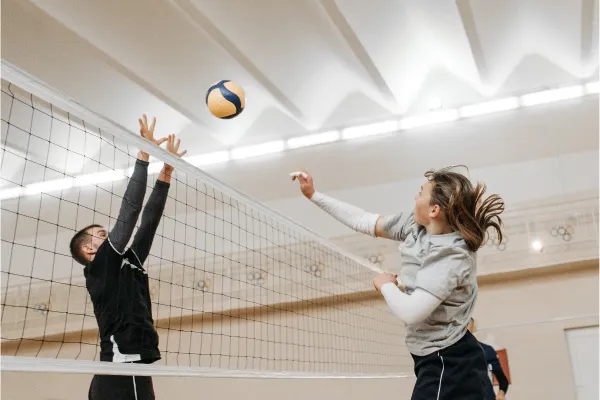
Which Other Contacts Are Legal In Volleyball?
In volleyball, players are allowed various contacts with the ball, including:
| Sr No | Legal Contacts | Description |
|---|---|---|
| 1 | Bump/Pass | Players can use their forearms to make controlled contact with the ball. |
| 2 | Set | Players can use their fingertips to set the ball for a teammate. |
| 3 | Spike/Attack | Players can hit the ball into the opponent’s court overhead with one or both hands. |
| 4 | Serve | Hit the ball over the net from behind the service line to the opponent’s court to serve. |
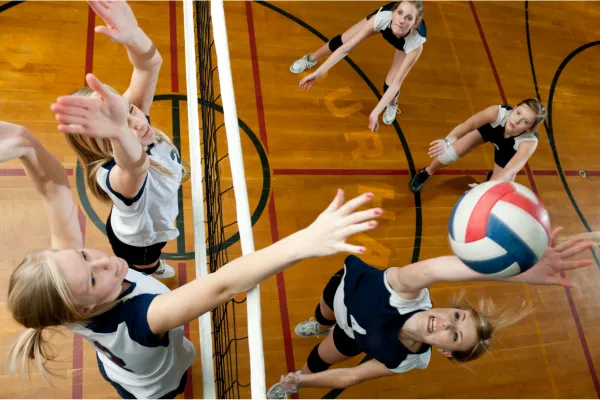
Which Contacts Are Illegal in Volleyball?
These following specific contacts are considered illegal in volleyball.
| Sr No | Illegal Contact | Description |
|---|---|---|
| 1 | Double Hits | Double hits occur when a player contacts the ball twice consecutively or when two teammates successively touch the ball. While double hits are legal on the team’s first contact, such as during a serve or a dig, they are not allowed in subsequent plays. |
| 2 | Held or Thrown Ball | Holding or forcefully throwing the ball during play is illegal. The ball should rebound immediately off any part of the body without being held against it. |
| 3 | Carries or Lifts | Carrying or lifting the ball, where the ball remains in contact with the player’s hands for an extended period, is considered a violation. |
| 4 | Repeated Contact | A player making repeated contacts on the ball in a single attempt to play it is not allowed. The connection should be an apparent attempt to pass or set the ball. |
| 5 | Rolling | Rolling—continuous ball-body contact—is banned. |
| 6 | Catching or Carrying the Ball | Catching or carrying the ball is illegal. Players must hit or volley the ball with clean, distinct contacts. |

FAQs
Volleyball players can use their heads and feet to touch the ball if it doesn’t stop. This rule adjustment makes gameplay more flexible.
Volleyball illegalities include lifts, carrying, and net touches. Rule violations result in point penalties.
Players use their hands, arms, and head to engage in volleyball, while the use of feet or lower limbs is not allowed.
You can wear a hat in volleyball, but it must not be unsafe or break league or organization rules.
Volleyball, which emphasizes collaboration and minimum collision, is low-risk. As with any sport, injuries can occur, stressing the need for training and safety.
Conclusion
Volleyball players can hit the ball with their heads, known as a ‘header,’ allowing for effectiveness, particularly in quick reflexes and unexpected plays. Although rarely employed, using the head can enhance surprise and speed up replies. This strategy helps expert players make defensive saves and creative moves.
Volleyball players must know the laws about using their minds and utilize the appropriate tactics to position, time, and defend. When you think, you can surprise the opposing player, make a legal last-resort move, respond quickly, and develop new strategic options.
Safety, head position, and obeying the regulations are the most critical things to do to ensure a fair game and no injuries.
Volleyball players often knock their heads due to its speed. Accidentally hitting their heads does not result in punishment for players because the use of helmets and headbands mitigates the risk of injury.
Head hits make the game more intriguing as players try bumps, sets, spikes, and serves. To distinguish legal and illicit relationships is a must. Double hits, holding or throwing the ball, lifts or carries, repeated contacts, rolling, and catching or carrying are illegal.
Knowing the subtleties of legal touches, including when to utilize your head, makes volleyball more enjoyable and improves strategy. Volleyball players use their talents and caution to maintain the game fair and exciting for spectators.
Related Posts
What Is Back Row Attack In Volleyball

Hassan Baig a former volleyball player, coach and Administrative At Volleyplan.com.
My name is Hassan Baig and I am a former volleyball player and coach. I have a passion for the sport and have dedicated my life to promoting it. I have worked with some of the best players in the game and have helped them achieve their full potential Read More


